
Following what’s trending and trendspotting are not the same.
Trendspotters identify the coming trends and capitalize on them early. They stay market leaders.
Think about the top brands in the market now. They are the names others turn to prepare for what’s coming. It’s why there is hype around every new iPhone launch. Yet, being on the cutting edge of the industry isn’t just reserved for the current market leaders. By keeping an eye out for industry data, you can anticipate which trends are fleeting (think clubhouse vs. TikKok), and which have lasting power to disrupt your market.
But getting this to have the first-mover advantage information isn’t easy. That’s why many businesses rely on Similarweb Digital Research Intelligence to get the real-time data they need to trendspot effectively.
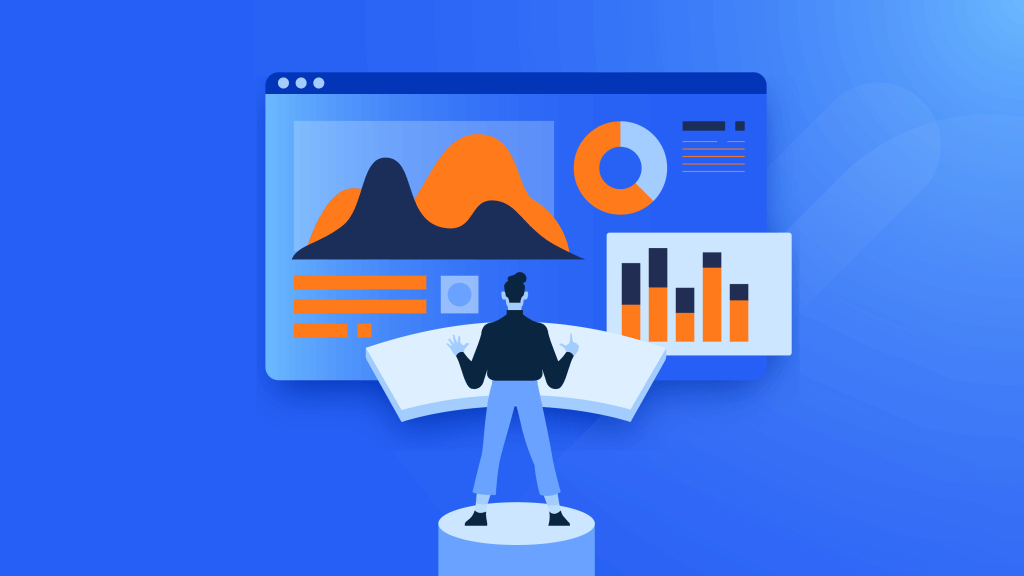
What is trendspotting?
Trendspotting is a continuous cycle that begins with a trend gaining in popularity. People start talking about it on social media and web searches involving related trending or seasonal keywords spike.
As the trend’s popularity picks up steam, businesses adapt and pivot accordingly. This can be on a broad level, such as business strategy or product launch, or more localized like a new marketing campaign that takes into account the new public sentiment.
Finally, we see a broader audience reach as word spreads. Depending on the number of people the trend resonates with, you may have the chance to reach new audiences and engage with existing ones, which leads to increased brand awareness.
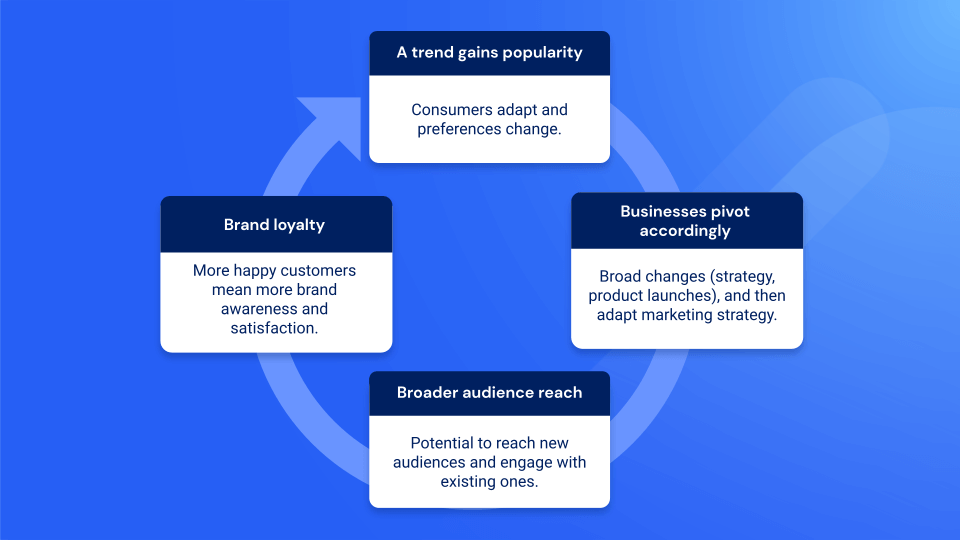
3 types of digital trends
You’ll typically encounter three different types of digital trends during your market research:
Trendspotting vs. traditional market research
Spotting trends is different from traditional market research and should complement any research tactics you already have in place.
In market research, your goal is to define your place in the market, play to your strengths, and improve your weaknesses, also known as a SWOT analysis. Your focus is on identifying market changes over time, studying how your competitors position themselves in the market, and defining your target audience.
Though these elements are all essential for any company, they probably won’t help you spot new trends before your competitors.
In trendspotting, your goal is to become a coveted early adopter of new best practices. You’re discovering what is happening as it happens, seeing how customers are reacting, and analyzing audience behavior at a macro-level.
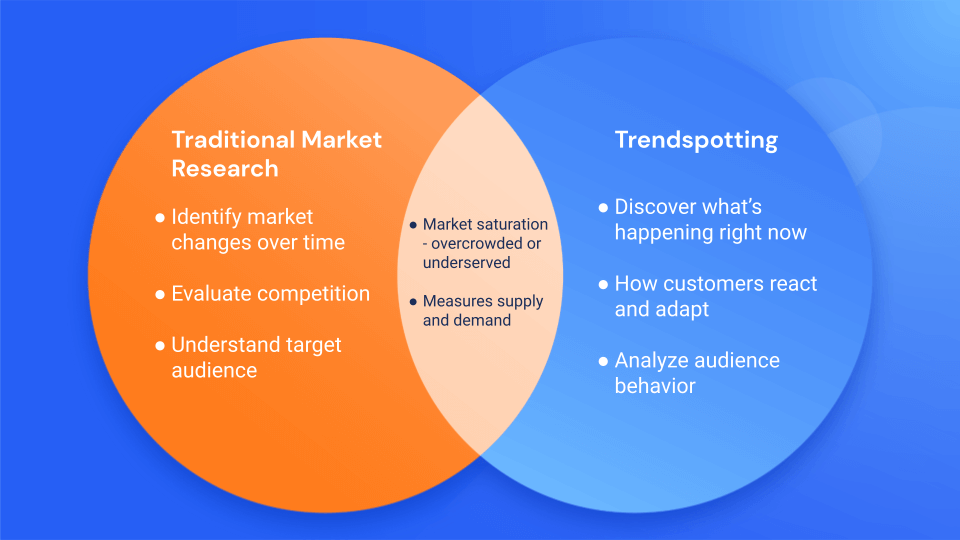
In some cases, you can combine traditional market research and trendspotting. For example, you can evaluate market saturation (overcrowded or underserved) as well as measure supply and demand.
Challenges of trendspotting in a digital world
As the digital age continues to progress, the information it brings us continues to pile up. While the digital age definitely means there is a plethora of data available to us, it also means sorting through extra information to get to what matters most. While these shouldn’t deter you, there are some challenges involved in spotting trends; however, a website or data analytics tool will help solve most of them.
Accuracy
Trendspotting is all about gathering and analyzing data. But what if the data you collected isn’t accurate? Using outdated or inaccurate information could lead you to draw false conclusions.
Missed opportunities
On the other hand, not having enough data to forecast a trend means you’ll likely miss the boat (and the hype) around it. Trendspotting is all about timing.
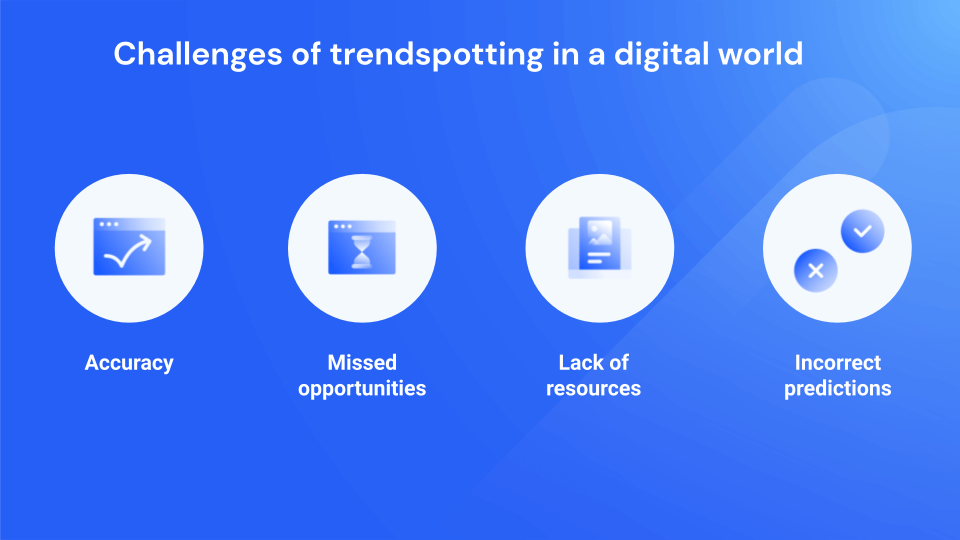
Lack of resources
A lack of resources will negatively impact your efforts to spot trends. Not having enough time, manpower, or the right technology at hand to analyze what’s going on in the market will slow you down.
Putting your eggs in the wrong basket
It happens to everyone. Sometimes you make the wrong prediction and a trend that you thought was going to be a huge hit fades out fast. Learn from situations like these and see where your predictions went wrong to improve next time.
Trendspotting x Digital Research
The good news? Digital intelligence can be used to perfect your trendspotting strategy. Trusted, real-time data can help you predict when a trend will land, differentiate between mass and niche trends, and identify balances between supply and demand.
There are a variety of ways you can use digital intelligence to validate your research when doing trendspotting, including engagement metrics, search volume, and audience analysis.
Where trendspotting fits into your digital strategy
It’s your turn to make trend-watching a regular part of your digital strategy. We’ve illustrated the four main steps below:

How to be an effective trendspotter
Now that we’ve nailed down how to be an effective trendspotter, let’s dive into a few trendspotting examples using Similarweb Research Intelligence. We’ll cover how to monitor market behavior, analyze year-over-year trends, and identify trending topics.
Monitor market behavior
You can use data to validate seasonal trends and, in certain cases, anticipate market recovery. In the example below, you’ll see a snapshot of the global Travel and Tourism Industry using historical data. By looking at the industry over time, the drop in March-April 2020 is apparent and recovery afterward can then be tracked in real-time.
Access to this information means you can spot and react to trends as they happen.
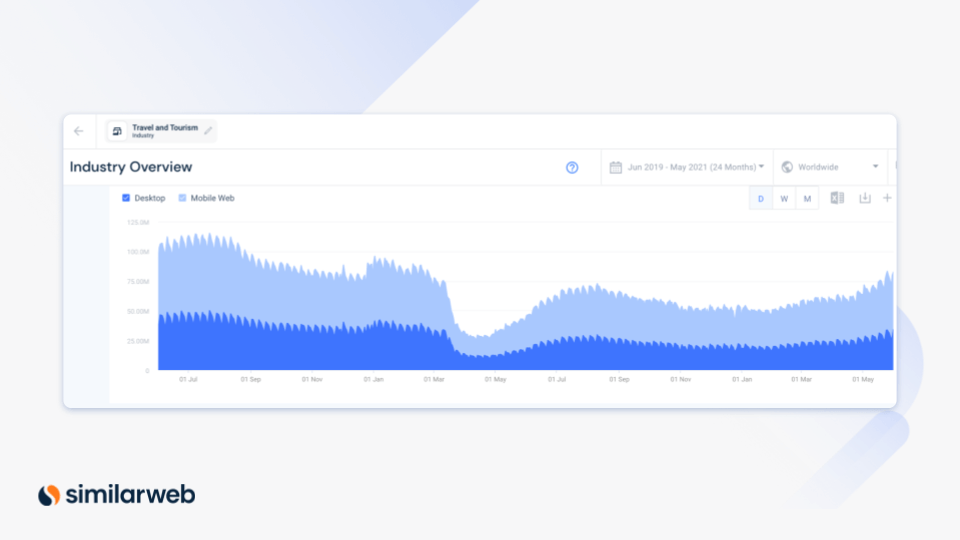
Examine year-over-year trends
By monitoring year-over-year (YoY) trends in your industry, you’ll not only be able to see whether it’s growing or declining, but also understand the ongoing shifts in online behavior.
In this example of the retail industry from 2019 to 2020, you can see the impact of the pandemic as it’s grown by 10% YoY. This data can be used to validate predictions that people will continue to buy more online, and that COVID-19 was a macro shaping event that changed consumer behavior for good.
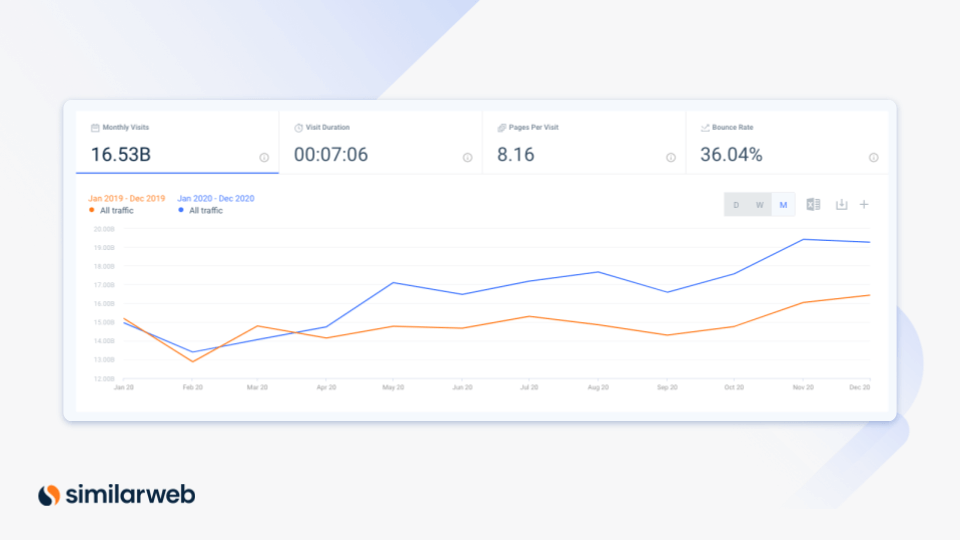
Analyze search trends within an industry
Analyzing search behavior and audience interests is another important way to understand and predict trends. This gives you the ability to understand what’s trending online, what people are interested in, and what is relevant to your target audience. Similarweb shows volume trend lines for specific search terms, giving you the ability to see search volume over a certain period of time and per geographic area.
Search interests give you a holistic view of trends within a specific market. This can help you identify the consistent market monopoly players to keep an eye on and see when trends peak and when they’re in high demand.
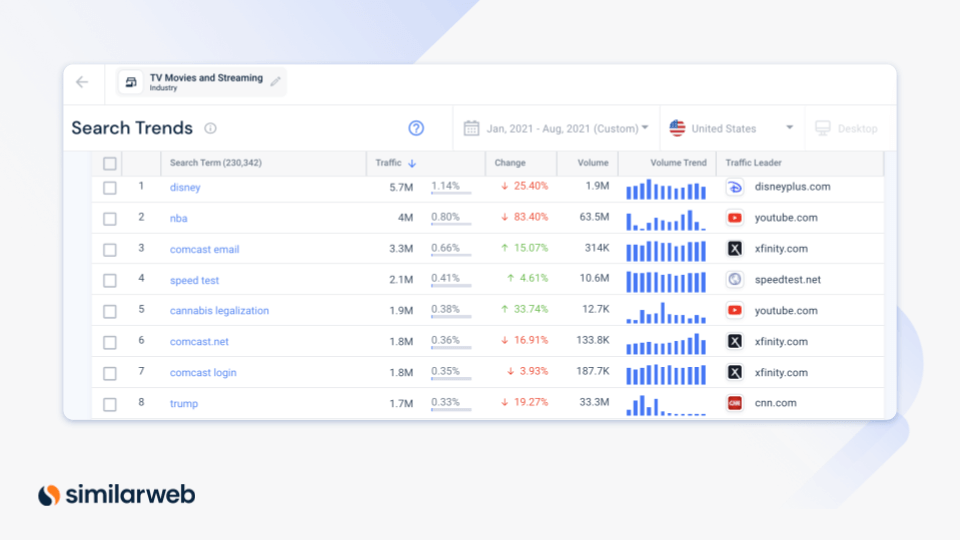
Ready, set, trendspot
Trendspotting is critical for businesses that want to stay ahead of the competition and maximize their impact during market shifts. It’s time to get to work!
To learn more about the data behind this article and what Similarweb has to offer, visit https://www.similarweb.com/.







Sign up to receive our stories in your inbox.
Data is changing the speed of business. Investors, Corporations, and Governments are buying new, differentiated data to gain visibility make better decisions. Don't fall behind. Let us help.













Sign up to receive our stories in your inbox.
Data is changing the speed of business. Investors, Corporations, and Governments are buying new, differentiated data to gain visibility make better decisions. Don't fall behind. Let us help.





